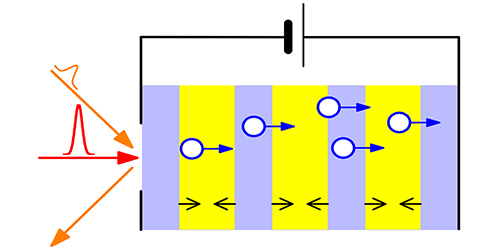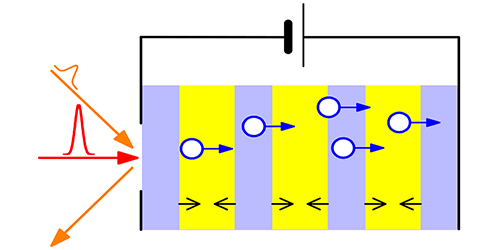Pumping up the Sound
High-frequency phonons traveling through solids can have wavelengths as short as 10 nm, making them ideal for imaging small-scale structures that can’t be probed with longer-wavelength visible light waves. But this would require a strong coherent phonon source. Now a group of researchers from Japan, Germany, and France show that the intensity of phonons moving through a semiconductor material can be amplified by a factor of 2 via an electrical current.
An acoustic wave moving through a semiconductor modulates the local electronic band structure of the material, allowing it to exchange energy with electrons. If the electrons are traveling faster than sound through the material, energy can be transferred from electrons to phonons: The electrons get slower and the number of phonons increases. Applying a current to the semiconductor creates a copropagating source of higher-energy electrons, which can amplify the phonon signal further. Experiments back in the 1950s and 1960s showed that this method works for 100-MHz phonons traveling in bulk semiconductors. Keisuke Shinokita from the Max Born Institute, Germany, and colleagues, have now demonstrated strong amplification of coherent near-terahertz-frequency phonons moving in a semiconductor superlattice.
A standing wave of 410-GHz phonons was set up in a gallium-based semiconductor structure by irradiating it with a femtosecond optical pulse. Applying a copropagating electron current, the group was able to double the strength of the resulting phonon signal. According to the authors, this gain should be sufficient to overcome decay losses in the signal, enabling a reliable phonon source for imaging nanometer structures ranging from biomolecules to electronic circuits.
This research is published in Physical Review Letters.
–Katherine Wright





